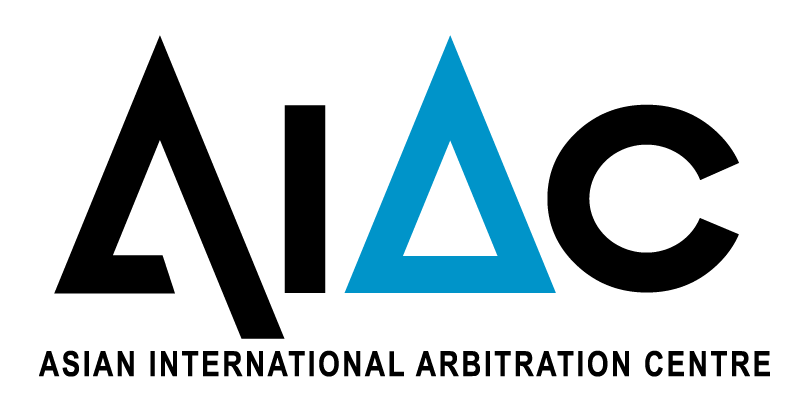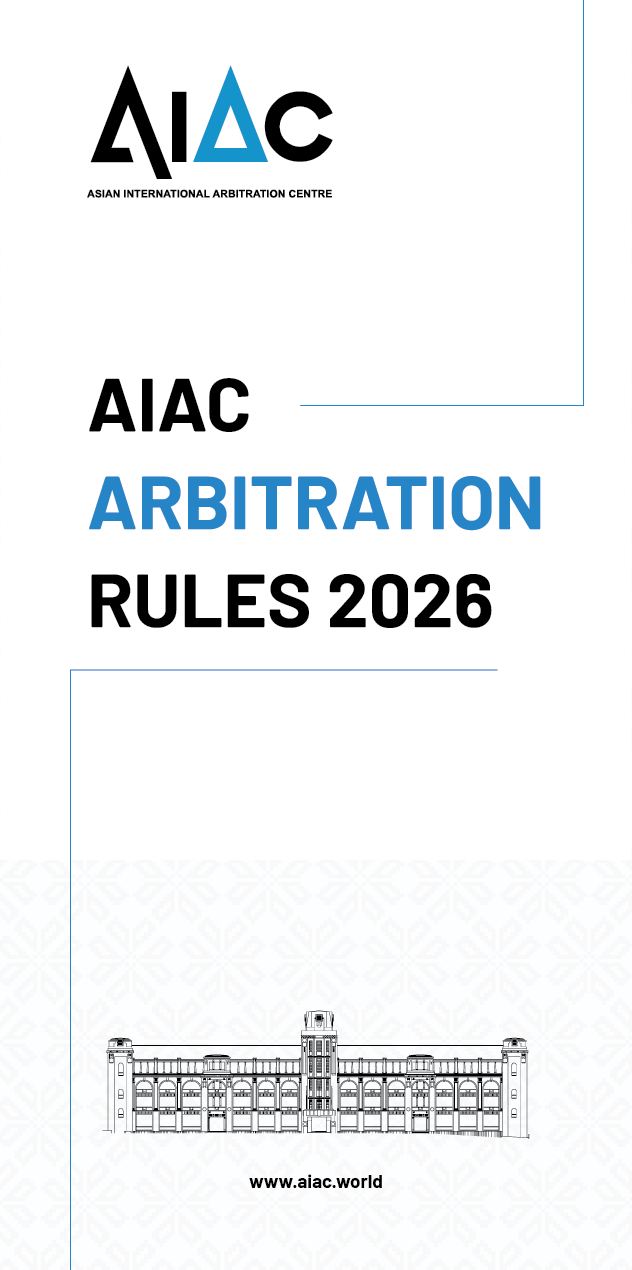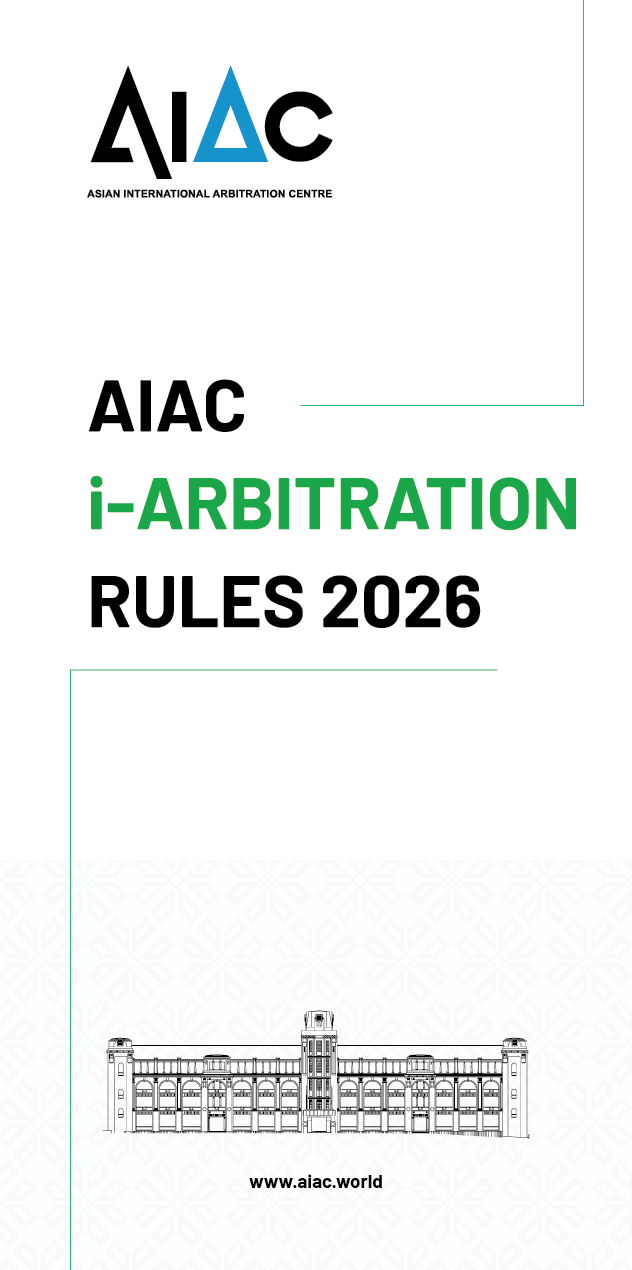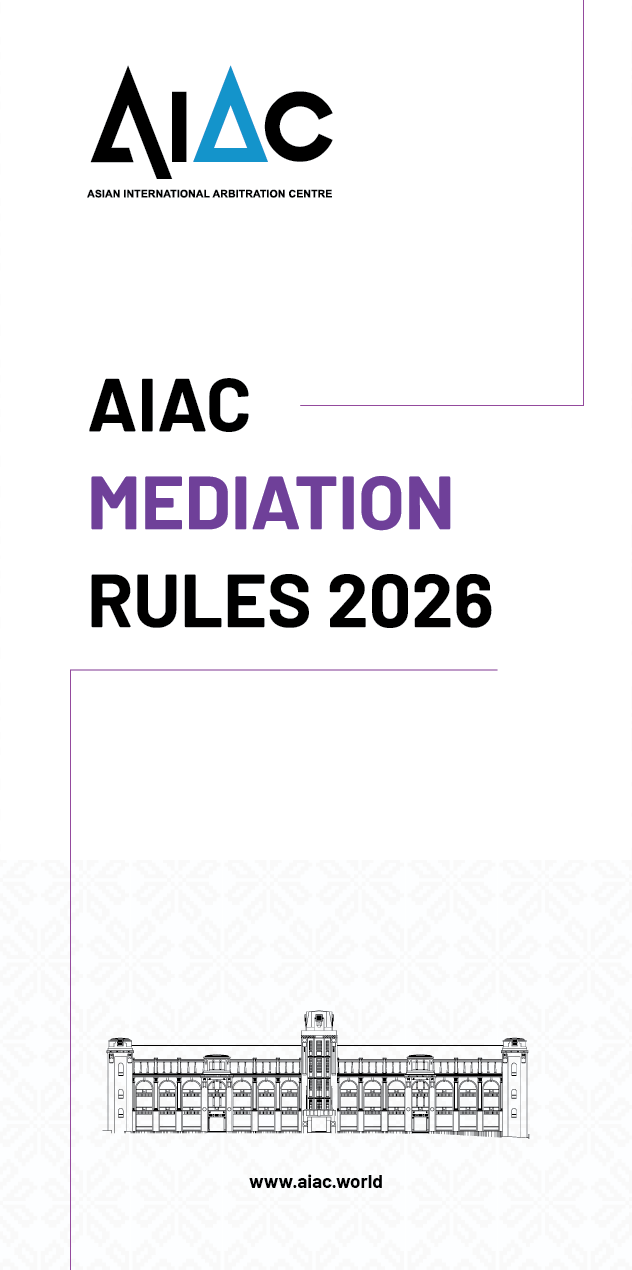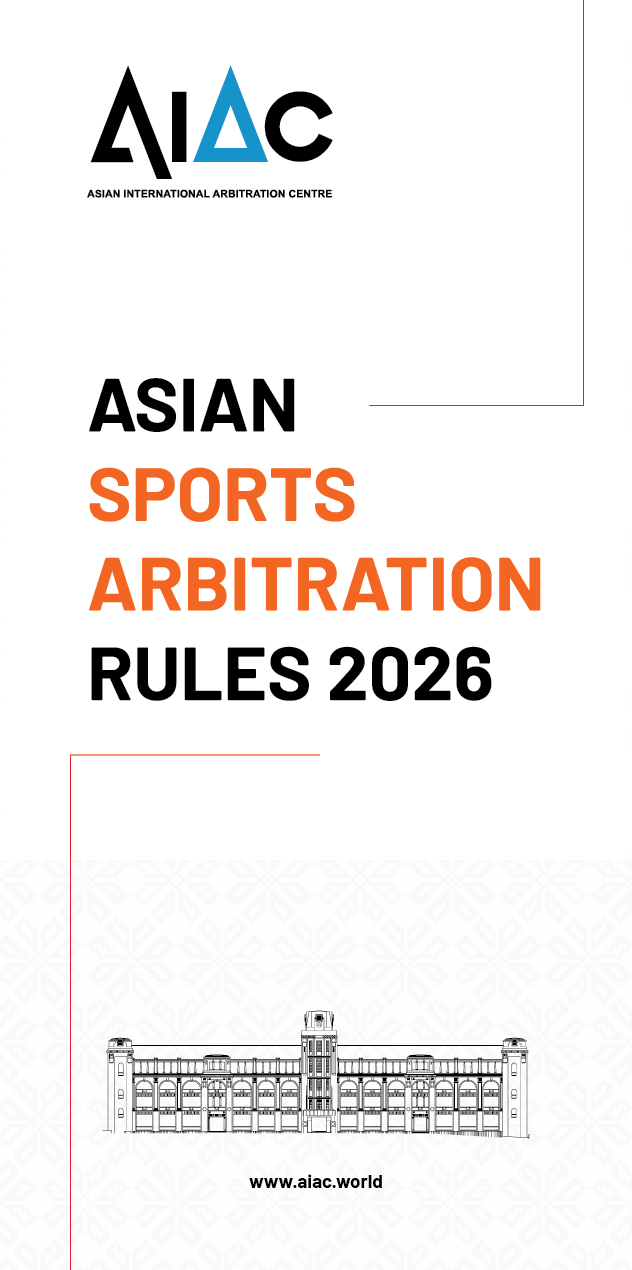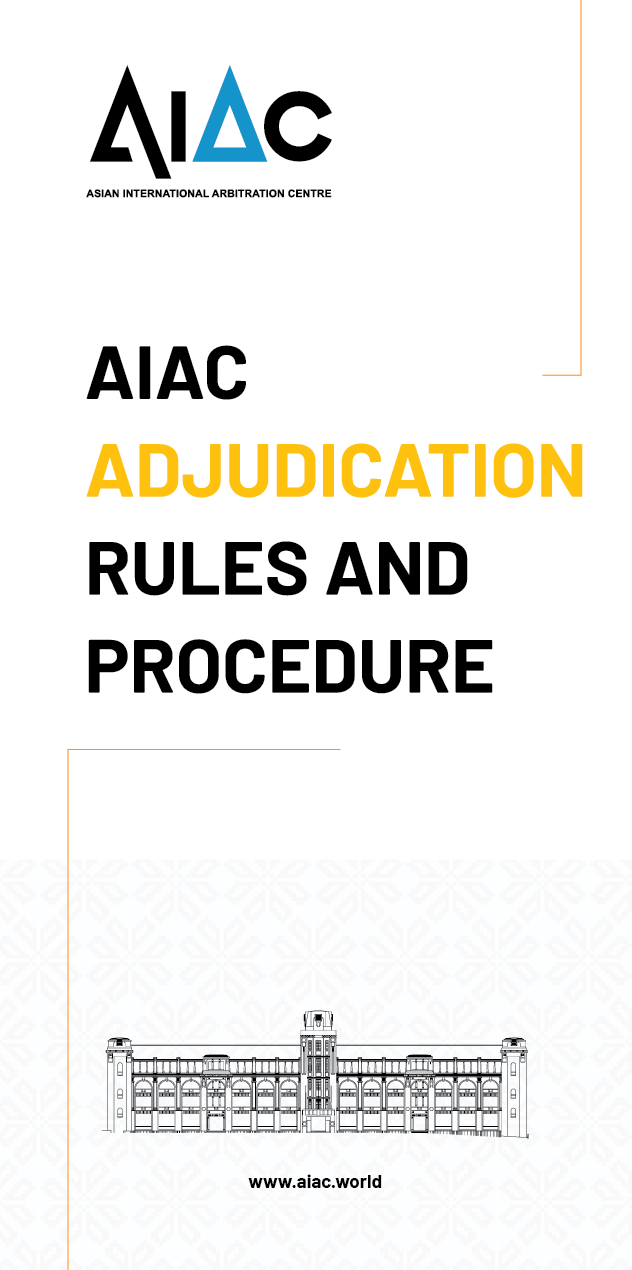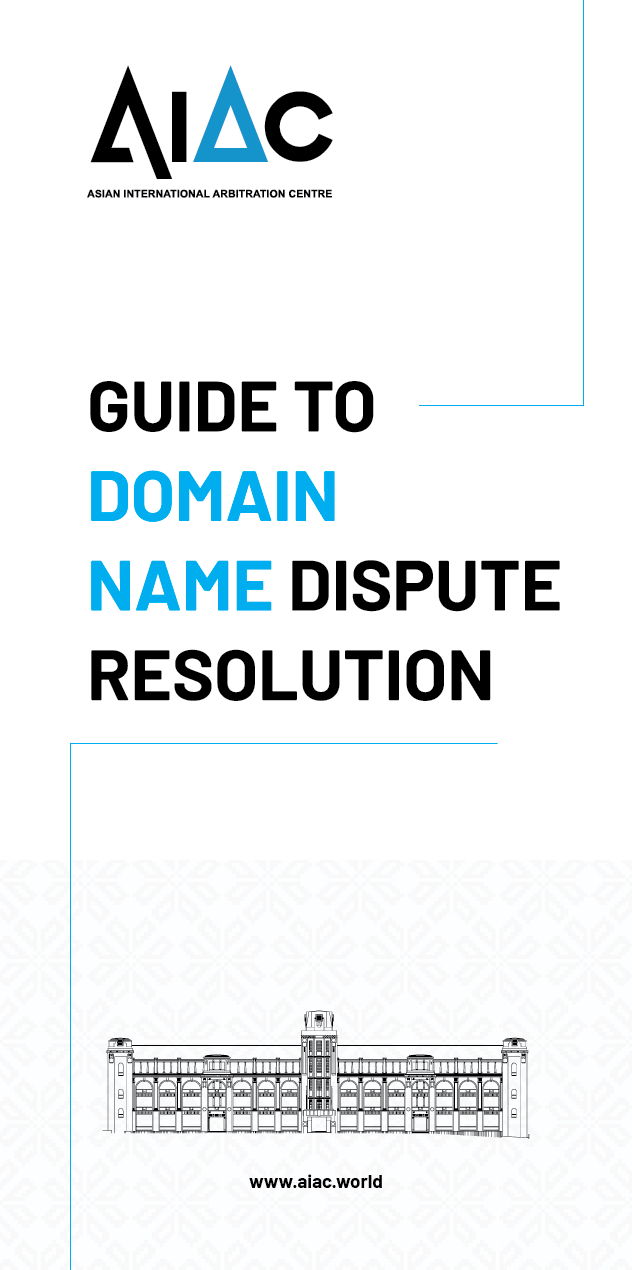SALIENT FEATURES
AIAC SUITE OF RULES 2026
The AIAC Arbitration Rules 2026 features the establishment of the AIAC Court of Arbitration where it defines and delineates the respective functions of the President, the AIAC Court and the Registrar in the AIAC-administered arbitration proceedings.
The AIAC Arbitration Rules 2026 increases the maximum pecuniary (amount in dispute) threshold prescribed for the operation of fast track procedures to USD3 million for international arbitration and RM2 million for domestic arbitration.
The AIAC Arbitration Rules 2026 prescribes relevant factors that the President of the AIAC Court of Arbitration can take into consideration in the appointment of arbitrators, thereby promoting greater transparency and diversity in the appointment processes.
The AIAC Arbitration Rules 2026 introduces a standalone provision on third-party funding that aims to ensure robustness of the disclosure obligation, the continuing duty of disclosure and transparency of the funding arrangement in tandem with Chapter 2, Part III of the Arbitration (Amendment) Act 2024.
The AIAC Arbitration Rules 2026 requires all forms of the draft Awards (except Emergency Awards) to undergo technical review by the AIAC Court of Arbitration, which serves to uphold the quality of Awards issued in the AIAC-administered arbitration.
The AIAC Arbitration Rules 2026 holistically promotes the use of mediation before, during or after the commencement of arbitration while preserving the fundamentals of the Arb-Med / Arb-Med-Arb / Med-Arb models.
Enhancing the features of the AIAC Arbitration Rules 2021 and 2023, the 2026 Rules is supplemented with global best practices and latest standards tailored to meet the evolving demands of the ADR community, among others:
- prescribed time limit for the Arbitral Tribunal's determination of the Summary Determination Request;
- prescribed instances where the Emergency Arbitrator Request can be submitted;
- issuance of "order" as among the recognised form of decision in the Emergency Arbitration proceedings;
- power of the Arbitral Tribunal in determining the costs of arbitration, legal and other expenses as well as the apportionment of such liability;
- power of the Arbitral Tribunal in appointing tribunal secretary and the procedures thereto;
- closure of proceedings for matters to be decided in the Award; and
- streamlined procedures for the closure of proceedings, interpretation of the Award, the correction of the Award, and the Additional Award.
The AIAC Arbitration Rules 2026 features a chapter-based navigation, covering each stage of the arbitration proceedings from commencement up until the delivery of the Awards, enhancing overall effectiveness, accessibility and user-friendliness of the Rules.
The AIAC Mediation Rules 2026 features the establishment of the AIAC Court of Arbitration where it defines and delineates the respective functions of the President and the AIAC Court in the AIAC-administered mediation proceedings.
The AIAC Mediation Rules 2026 recognises and promotes the use of Arb-Med-Arb procedures for an expedient and binding resolution of disputes. The model clause serves to encourage and provide guidance to the parties in adopting tiered-dispute resolution mechanism in the agreements/contracts.
The AIAC Mediation Rules 2026 allows the mediator and the parties to either negotiate on the mediator's fees or adopt the Recommended Mediator's Fee provided in the Rules. This approach differs from the practices under earlier editions of the AIAC Mediation Rules, where the Schedule of Fees was made as the default position unless otherwise agreed.
The AIAC Mediation Rules 2026 introduces the concurrent mediation proceedings provision to provide for:
- the commencement of concurrent mediation proceeding where one or more issues identified can be resolved by way of mediation without suspending the arbitration proceedings;
- the appointment of concurrent mediator at any point of the arbitration proceedings, provided that the parties jointly agreed to such appointment;
- an expedited process to appoint a concurrent mediator within the prescribed timeline; and
- waiver of the Fixed Appointment Fee and Filing Fee for any mediation commenced under the concurrent mediation proceedings procedures.
The AIAC Mediation Rules 2026 features refined mediation procedures in line with global standards and best practices while strengthening parties' commitment to amicable settlement, among others:
- Enhanced role of the mediator in accordance with the Mediation Act 2012; and
- Preservation of confidentiality in mediation.
The AIAC Mediation Rules 2026 features a chapter-based navigation for every stage of the mediation proceedings and standalone Schedules of Fee to enhance overall accessibility and user-friendliness of the Rules.
Mirroring the key features of our conventional arbitration Rules, the AIAC i-Arbitration Rules 2026 present an enhanced institutional arbitration framework that is both contemporary and Shariah-compliant to meet the evolving needs of the industries. Guided by Islamic rulings and principles, the procedures are thoughtfully designed to ensure Shariah compliance throughout the arbitration proceedings while preserving the sanctity and enforceability of the outcomes.
The Asian Sports Arbitration Rules 2026 features the establishment of the AIAC Court of Arbitration where it defines the respective roles of the President, the AIAC Court and the Registrar to ensure a transparent framework for the effective administration of sports arbitration proceedings.
The AIAC Adjudication Rules and Procedure reflects the legislative amendments of both the Construction Industry Payment and Adjudication Act 2012 and the CIPA Regulations 2014 and is further complemented by several refinements aimed at enhancing administrative support in the AIAC's capacity as the adjudication authority under section 32 of CIPAA 2012.
The AIAC's Guide to Domain Name Dispute Resolution encompasses the updated MYNIC's Domain Name Dispute Resolution Policy (MYDRP), the Rules of the MYDRP as well as the revised AIAC's Supplemental Rules for MYDRP. These updates include, among others, the refined procedures for the efficient resolution of .MY domain name disputes and the defined role of the AIAC in light of the establishment of the AIAC Court of Arbitration.
